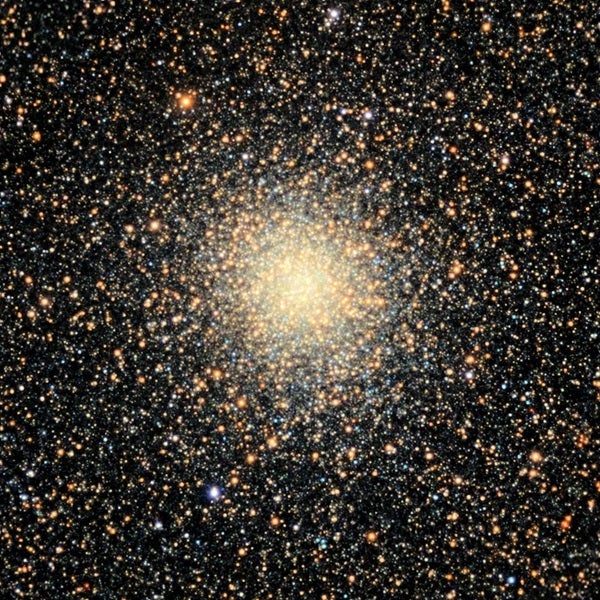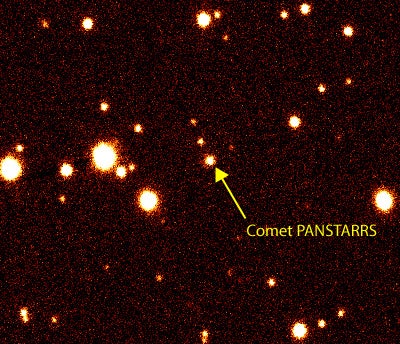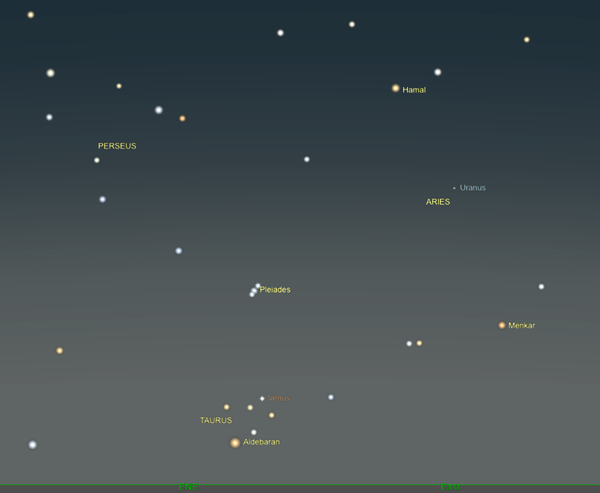The Boötid meteor shower is currently active, peaking overnight tonight and into tomorrow morning. However, this shower is variable and produces significant numbers of meteors only rarely. For observers at midlatitudes in the U.S., its radiant in the constellation Boötes remains above the western horizon all night. To find the radiant, look 30° due east of the bright magnitude –0.05 star Arcturus. The best time to look for shower meteors will be right after nightfall — opposite most major meteor showers, which are best viewed in the early morning hours.
A crescent Moon, 37 percent lit, hangs nearby, just off the hindquarters of Leo the Lion. Its light shouldn’t interfere too much with your meteor hunt, but you may want to revisit the region over the next few days, when the Moon has moved on, to see if you spot any stragglers.

Astronomy is pleased to present The Complete Star Atlas, the perfect resource for stargazers of all ages. This practical guide to viewing the night sky is now available, and includes approximately 87,000 stars, 1,200 deep-sky objects, and 24 high-quality star maps. You’ll also find 50 pages of astronomy history, tips, and more from experienced Contributing Editor Michael E. Bakich.
Asteroid 7 Iris reaches opposition at 10 P.M. EDT. Around this time, you’ll find the magnitude 9 asteroid above Sagittarius’ Teapot asterism in the southeast. Kaus Borealis, the Archer’s magnitude 2.8 lambda star, forms the top of the teapot’s lid. Iris sits 4.8° due north of the star; you should be able to spot it with binoculars or a small scope.
But Iris is not alone. Less than 2° northeast of the main-belt asteroid is M25. Also cataloged as IC 4725, this magnitude 4.6 open star cluster spans about 40′ and is an excellent binocular target. It lies about 2,000 light-years away — quite a bit farther than Iris’ current 151 million miles (242 million kilometers) from Earth.
First Quarter Moon occurs at 4:16 A.M. EDT.
You can catch Comet PanSTARRS (C/2017 T2) as it glides past the irregular galaxy NGC 4449 today. Both lie in the circumpolar constellation Canes Venatici, which sits beneath the curve of the Big Dipper’s handle.
The comet and galaxy appear a little less than 1° apart if you search them out early in the morning; by the time night falls, the pair are just over 1° apart. In the morning, you’ll find PanSTARRS due southwest of the galaxy; by the evening, it’s moved eastward a bit, closer to south-southwest. PanSTARRS is currently around magnitude 9, roughly the same brightness as the galaxy. Increasing your magnification will allow you to pick out the subtle differences between the two — including, possibly, PanSTARRS’ greenish hue, which will show up best in images.
Monday, June 29
Jupiter blazes brightly at magnitude –2.7, climbing above the southeastern horizon an hour after sunset tonight. Just under 6° to Jupiter’s east is Saturn, shining around magnitude 0.2. Saturn’s largest and brightest moon, Titan, lies just under 2′ to the planet’s northwest. See if you can spot it in your scope.
All four of Jupiter’s Galilean moons are visible tonight: Europa is to the planet’s east, while to the west are Io (nearest), Ganymede, and Callisto (farthest out). If you catch the planet early in the evening, you may see its Great Red Spot through a telescope; the Spot should be centrally located around 8:17 P.M. EDT.
Pluto sits 41.3′ due south of Jupiter tonight. It’s a paltry magnitude 14.7, meaning you may not spot it visually even with a telescope, but imaging equipment should snag you a glimpse of the distant world.
The Moon reaches perigee at 10:13 P.M. EDT, when it will sit 229,260 miles (368,958 km) from Earth.
Venus is 8° high in the east an hour before sunrise. The planet is 18 percent illuminated and appears 43″ wide, currently about 35.3 million miles (56.8 million km) from Earth. You can find it glowing at magnitude –4.5 in the constellation Taurus the Bull, near the Hyades star cluster. Venus sits 4.5° northwest of Aldebaran, the Bull’s golden-hued, 1st-magnitude eye. Look 10° above the planet to spot the sparking Pleiades (M45).
While it’s still dark, you can also try your hand at spotting Uranus, glowing a relatively easy magnitude 5.8 in the constellation Aries. It should make a good target for binoculars or a modest telescope. You’ll find it about 23° due west of Venus, roughly halfway between the bright stars Hamal and Menkar. Its blue-gray disk is a mere 3″ across.
Mercury is at inferior conjunction at 11 P.M. EDT.
Today is also the sixth-anniversary celebration of Asteroid Day, which was founded to raise awareness about asteroids and their importance in our solar system’s past, present, and future. In addition to our Iris sighting a few days ago, check out the entries for later this week for more asteroid-spotting fun. Plus, check out AsteroidDay.org for online goodies that include an ongoing live broadcast with contributions from TED, IMAX, the European Space Agency, the BBC, and more.
Wednesday, July 1
Mars rises shortly after local midnight tonight. It’s a great morning target, shining at –0.5 in southwestern Pisces the Fish. The best time to view the Red Planet is in the hour before dawn, when it’s about 30° above the southeastern horizon. You’ll want to revisit Mars several times this month, as it will grow in size from 12″ to 15″ by July 31 as well as brighten to –1.1 by the same date.
If you have binoculars or a telescope, swing them 11.2° west of Mars to see if you can spot magnitude 7.9 Neptune. You can use 4th-magnitude Phi (φ) Aquarii as a guide star, as it lies only 4° east-northeast of the ice giant’s 2″-wide disk.
Thursday, July 2
Asteroid 532 Herculina is at opposition this morning at 10 A.M. EDT. It occupies the same region of the sky as Iris, located above — and this time to the northeast (left) of — the Teapot asterism. It’s about 6.7° north-northeast of Kaus Borealis and glows at magnitude 9.5.
While you’re in the region — which is where you’ll also find Jupiter, Saturn, and Pluto to the east — consider searching out M22 (NGC 6656), a globular star cluster about 24′ across. An easy magnitude 5.2, this cluster is about 50 percent larger than the famous great globular M13 (NGC 6205) in the constellation Hercules. You can even compare them directly, as magnitude 5.3 M13 is visible high in the east, about 2.5° south of Eta (η) Herculis.
Friday, July 3
Asteroid 56 Melete skims past a magnitude 6.3 field star in Scutum tonight. To find the asteroid, look roughly 6.5° west of M11, also known as the Wild Duck Cluster. You might find your asteroid hunt challenged by a nearby waxing gibbous Moon in Sagittarius. Our satellite has less than 2 percent to go to Full (it will reach this phase just after midnight EDT on the 5th).
You’ll definitely want to come back to this region later in the month; Melete doesn’t travel more than 3° west throughout July, and there are several deep-sky objects to hunt down nearby when the bright Moon has left the sky.

Our exclusive Sky Guide 2020 is now available! This free downloadable pamphlet contains a month-by-month rundown of 2020’s biggest celestial events, from Mars’ best opposition in years to the return of totality in South America this December. Check out Astronomy’s Sky Guide 2020 now!












